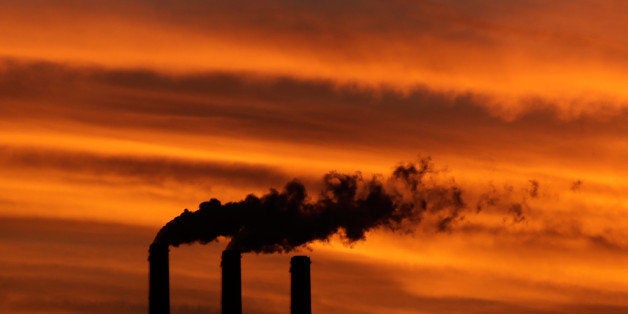
After 20 up, down and often frustrating years of international climate negotiations, we are about to learn what each country is prepared to do to confront global climate change. By the end of this year, we will know whether the world community is ready to finally close the gap between what climate scientists say we must do and what political leaders think they can do.
That is the plan, anyway. If all goes well, 2015 will be the year we witness the climactic act in the most important performance ever played out on the world stage. It is a year of drama for those interested in the mother of all environmental issues, because we thought we had arrived at this point before, only to be disappointed.
For those of you who have not paid attention, here is what is about to unfold, what is likely to happen, and what the ideal outcome would be:
Each December, negotiators from more than 190 nations get together somewhere in the world to work on an international climate treaty. The gatherings are called "conferences of the parties," or COPs.
The most recent COP was held last December in Lima, Peru. The next COP will be held this December in Paris. The expectation is that Paris will be where the world community finally reaches some sort of agreement on what we will do to avoid catastrophic global warming. That was also the expectation in 2009, when nations met in Copenhagen, but it didn't happen.
Simply put, the goal of the negotiations has been to hold global warming to no more than 2 degrees Celsius above pre-industrial levels. Climate scientists estimate that at that level of warming, we will have at least an even chance of avoiding the most catastrophic changes in the biosphere.
In Lima, nations concurred on a four-page document that acknowledges "grave concern" that the world is on a path to significantly exceed 2 degrees of warming. The document says that whatever agreement finally is reached, it must be ambitious. At the same time, however, it reveals how delicate the diplomatic challenge remains. It describes next steps in meek terms, as though climate talks were a game of Jenga with the blocks now stacked precariously high.
Starting next month, if they are ready to do so, nations are invited to reveal their goals for reducing greenhouse gas emissions, the class of pollutants from burning fossil fuels and the principal cause of global warming. In the interest of clarity and transparency, countries may reveal the details behind their goals, such as how they will achieve them and why they are "fair and ambitious." The Lima instructions carefully avoid suggesting whether the goals codified in a Paris agreement should be legally binding or merely voluntary.
These delicate instructions belie the seriousness of climate change after decades of delay. Just a few years ago, United Nations officials and some of the world's most prominent scientists warned that this year, 2015, is when greenhouse gas emissions from industrial nations must level off and begin a steep decline. This year was to be our "defining moment." Yet many who have watched or participated in the negotiations over the years expect that whatever emerges in Paris will be voluntary, relying on peer pressure rather than on legally binding commitments. Moreover, the prevailing expectation is that an agreement in Paris will not be ambitious enough to keep warming below 2 degrees.
The top United Nations official in the negotiations, Christiana Figueres, puts it this way: "It is a fundamental misinterpretation or misunderstanding of the complexity of what we're dealing with to even imagine that an agreement in Paris would in and of itself, at the turn of a dime, miraculously solve climate change. What Paris does is to chart the course toward that long-term destination." But in fact, the dime has been turning for two decades. With each year that passes, our chances get worse for keeping global warming at tolerable levels.
Let's imagine for a moment what an ideal achievement -- an international agreement equal to the challenge -- would be at the upcoming COP:
Full disclosure: The credibility of an emission reduction goal rises or falls on the plausibility of a nation's plans to achieve it. Ideally, each country would set an ambitious goal for cutting or avoiding carbon missions and disclose in detail how it would get there. Each nation's goals would be backed up with timetables, milestones, specific policies and programs, and methods for measuring progress.
This level of transparency would build the kind of confidence that would attract investments in a global clean energy economy. Transparency would also reveal ideas that other nations might want to adopt, show where technical and financial assistance is most needed, and identify potential multinational collaborations.
International cooperation: The stage already has been set for technically skilled countries to help those who need it. Ideally, the assistance would intensify now so that all nations, especially those with few technical resources, can set the highest possible goals. One example is the Low Emissions Development (LEDS) Global Partnership, in which 140 government institutions from around the world have been collaborating since 2011 to help one another develop climate mitigation plans. A relatively recent collaboration known as NAPs (national adaptation plans) provides least-developed counties with guidelines, workshops, training and technical advice on trying to adapt to climate changes that already are inevitable.
Another program, the Clean Energy Solutions Center, is sponsored by the Clean Energy Ministerial, an organization of high-level energy officials from 23 countries. It offers no-cost consultations with energy experts, issue papers, data and other information to government policy makers around the world.
Including the private sector: Governments cannot solve the climate problem alone, and fiscal conservatives hope they won't try. Ambitious carbon reduction plans would include not only government actions but also pollution-reduction commitments from the private sector, including industries, businesses and philanthropies.
Ideally, national plans to cut carbon emissions would include commitments by companies to disengage from deforestation, to reduce their own emissions, to improve their energy productivity and to decarbonize their supply chains. Foundations would commit to fund aggressive mitigation and adaptation programs. Energy utilities would lay out plans for incorporating energy efficiency, renewable resources, distributed generation, micro-grids, combined heat and power systems, and smart grids in their business plans.
An end to perverse subsidies: One of the most self-defeating irrationalities of our time is that nations have talked all these years about the need to reduce carbon emissions while continuing to spend trillions of dollars subsidizing them. As one observer put it, it is like trying to put out a fire by throwing gasoline on it.
Developed countries already have agreed that starting in 2020, they will contribute $100 billion annually to a Green Climate Fund that will finance clean energy and climate adaptation in developing countries. But $100 billion is a woefully inadequate investment for transforming the global energy economy. The International Energy Agency has estimated that $48 trillion will be needed between 2012 and 2035 to meet the world's need for energy. Annual spending for energy efficiency alone will have to rise to more than $550 billion by 2035, the IEA says. Meanwhile, nations both rich and poor are providing about $2 trillion annually in direct and indirect carbon subsidies, according to the International Monetary Fund (IMF).
Ideally, direct subsides for fossil energy producers and consumers would be shifted to clean energy development. One result would be a reduction in indirect costs to both government and society, for example by improving air quality and public health, conserving water that otherwise would be used in energy extraction and power plants, minimizing weather-related disasters, and reducing the likelihood of climate refugees and state failures.
In some countries that have tried to cut fossil subsidies -- among them India, Indonesia, Jordan, Nigeria and Sudan -- consumers have responded with protests. Yet consumer subsidies for fossil fuels are widely acknowledged to be a poor way to keep energy affordable. The IEA estimates that the bottom 20 percent of the world population receives only 8 percent of the value of fuel subsidies. There are better ways to remedy the regressive nature of energy costs, including carefully targeted direct cash payments. The IMF has outlined additional reforms.
Ideally, a Paris agreement also would include specific timetables from G-20 nations on when they will eliminate fossil energy subsidies, a commitment they made without details in 2009. So far, they apparently have made little or no progress.
A universal price on carbon: A universal carbon price would be another substantial source of capital for clean energy development. If climate change is the widest-ranging market failure the world has seen, as the British economist Lord Nicholas Stern has said, then a global price on carbon would be history's biggest market correction.
Energy markets will not be efficient until the price we pay for coal, oil and natural gas accurately reflects their actual costs to society, both direct and indirect. This should be a goal that leaders across the philosophical spectrum can support, from free market fundamentalists to advocates for government market interventions. An ideal climate deal in Paris would include an international commitment in principle and a negotiating path going forward to end the market-distorting, environment-damaging, self-defeating subsidization of carbon pollution.
***
Ideally, the world's collective response to global warming would be as rapid and muscular as the threat of growing climate disruption requires. With each year that passes without such a response, we are learning the hard way that what we once considered an ideal international response is now merely pragmatic.
This is the second in a series of posts on this year's international climate negotiations. This first in the series can be found here.
